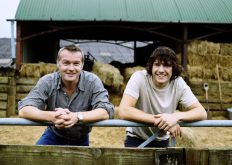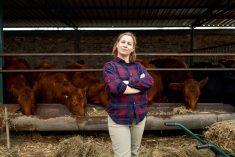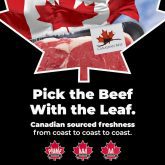Tradition still drives much of what we do in agriculture today, but unchecked, tradition establishes stale and ineffective methods of reaching those who seek our services or consume products we produce. The world of communication has changed. The animal health game has changed. Staying ahead often means doing new and different things, and relegating custom to the back burner.
In the contemporary world, marketing is about attracting people actively searching for products and services online. Getting found by customers is the strategy behind “inbound marketing” where people marketing a product or service earn their way by publishing useful information potential customers can readily access and understand. Inbound or “permission marketing,” the new label, is about building relationships beforehand in contrast to the traditional approach to marketing where providers of services and goods bought or begged their way in the door through paid advertisements and commissioned sales people.
Read Also

A strategic approach to risk on the ranch
Given the increase in the value of livestock and the market volatility, we need to cover our risks. First,…
It’s a new game at all levels. Agriculture needs to get on side to take advantage of the way people communicate and do research. People wanting to sell products and services must look at the challenges consumers face and the types of solutions they seek. It may be a new mom trying to make long-term buying decisions around red meat — how it is produced, what cut provides the best buy for the dollar and how to cook it. In the same breath, she is concerned about food safety at the supermarket and the relationship between how it is produced at the ranch. People coming through the front door have probably used search engines, read blogs and tapped into social networks to find answers to questions and formulate purchasing decisions. They seek solutions that give them comfort and trust.
Are we adequately prepared to provide clear, simple, accessible information? Are those assumed to be in the know aware how the process of providing information has suddenly evolved? The crux of renewal resides in the answers.
It is no longer good enough to just produce beef or pork or chicken and set it into supermarket coolers expecting consumers to come. In the same light, success for the graduate veterinarian is far beyond a degree from veterinary college, hanging a shingle on a clinic in rural Western Canada and expecting business to happen.
David Meerman Scott in his book THE NEW RULES OF MARKETING AND PR is adamant there are new rules about marketing and public relations and they are explicit:
- Marketing is more than just advertising.
- Public relations (PR) is for more than just a mainstream media audience.
- You are what you publish. People want authenticity, not spin. People want participation, not propaganda. Marketing is about delivering content at the moment the audience needs it.
- Marketing is about reaching underserved audiences via the web.
- PR is consumers seeing your organization on the web, not about a boss being seen on TV.
- Marketing is about your organization winning business, not about an agency winning rewards.
- Organizations must drive people into the purchasing process with great online content.
- Blogs, online video, e-books, news releases, and other forms of online content communicate directly with buyers in a form they appreciate.
- Agriculture can learn from what’s happening in mainstream business.
Demand remains the top issue facing the beef industry. In Canada, the industry is still bobbing in the eight-yearlong wake of BSE, the single biggest economic downturn ever faced by the red meat industry. Despite the hard lessons most assumed were learned through a decade of mischance, industry leaders still duke it out in the media. Consumers in search of answers about issues unfamiliar to them need help understanding the link between things like codes of practice, biosecurity and welfare, or between traceability and disease surveillance.
I get asked almost daily about why there are still so many welfare issues around raising beef, why producers resist using anti-inflammatories and painkillers for painful procedures like castration and dehorning, or why there is resistance to identifying animals today that are about to become food tomorrow. Many still do not understand why replacement hormones in a castrated steer do not represent a safety issue, or why those who choose to buy “organic” beef and pay the premium cannot freely exercise that option rather than being chastised or befuddled by extremists on both sides of the issue. We must learn to tell the stories clearly and without bias. Then having given account, make it readily available on computer screens and smartphones, or through blogs, tweets and You Tube for people who ride the light rail transit, or for the rancher navigating the Internet over morning coffee while contemplating the economic options around BVD vaccination. Options and personal choices are key. Consumers want to hear from those they believe to be credible, especially the families that produce food in ways that don’t bankrupt the earth.
Messages about livestock production must align with the shared beliefs and values of consumers. They have a hard time comprehending why the industry debates the value of electronic identification over hot-iron branding. A generation weaned on CSI Miami doesn’t understand that the technology to DNA fingerprint every calf isn’t yet within our grasp, but someday will be.
Dr. Ron Clarke prepares this column on behalf of the Western Canadian Association of Bovine Practitioners. Suggestions for future articles can be sent to Canadian Cattlemen at [email protected] or WCABP [email protected]















